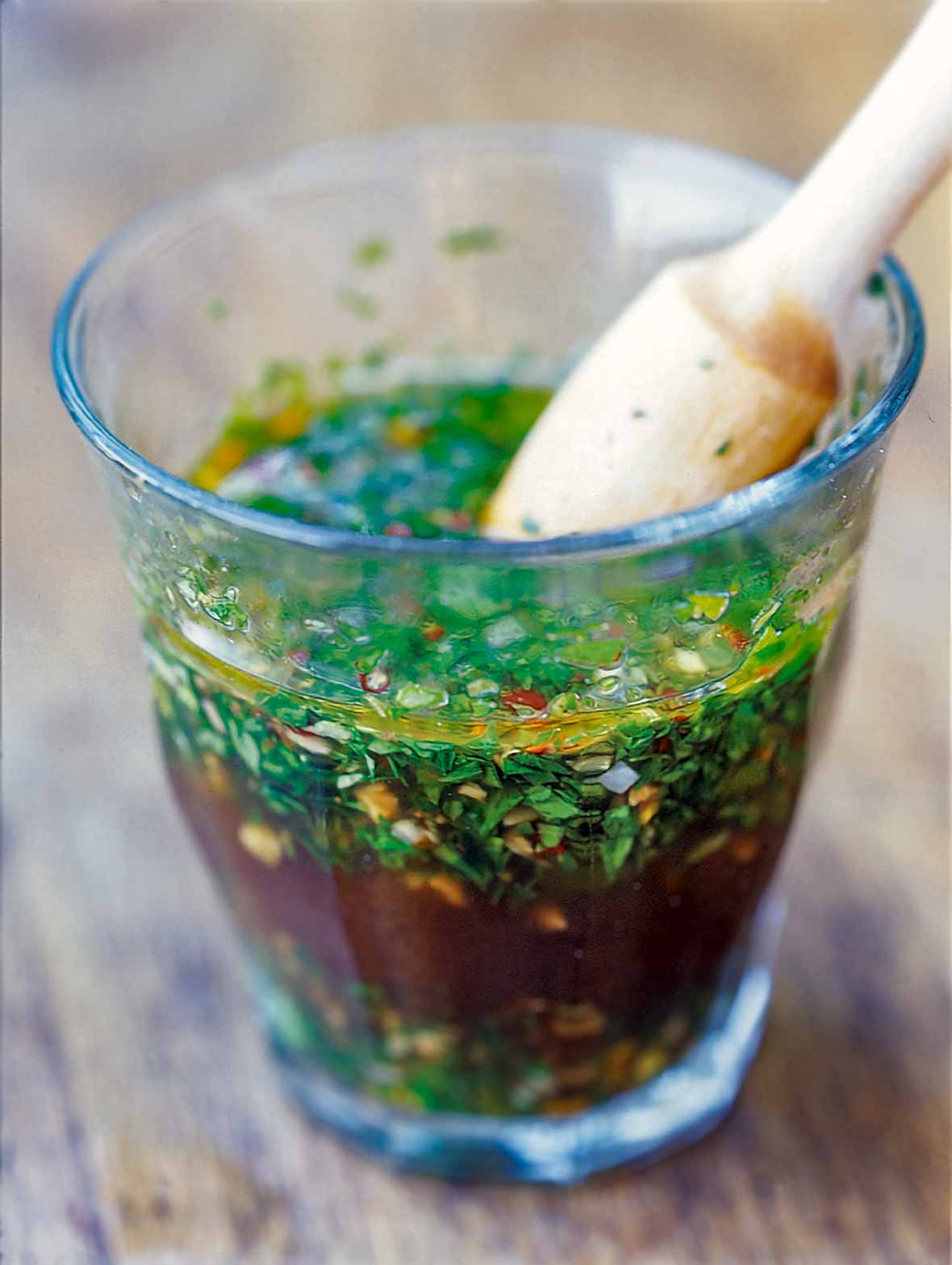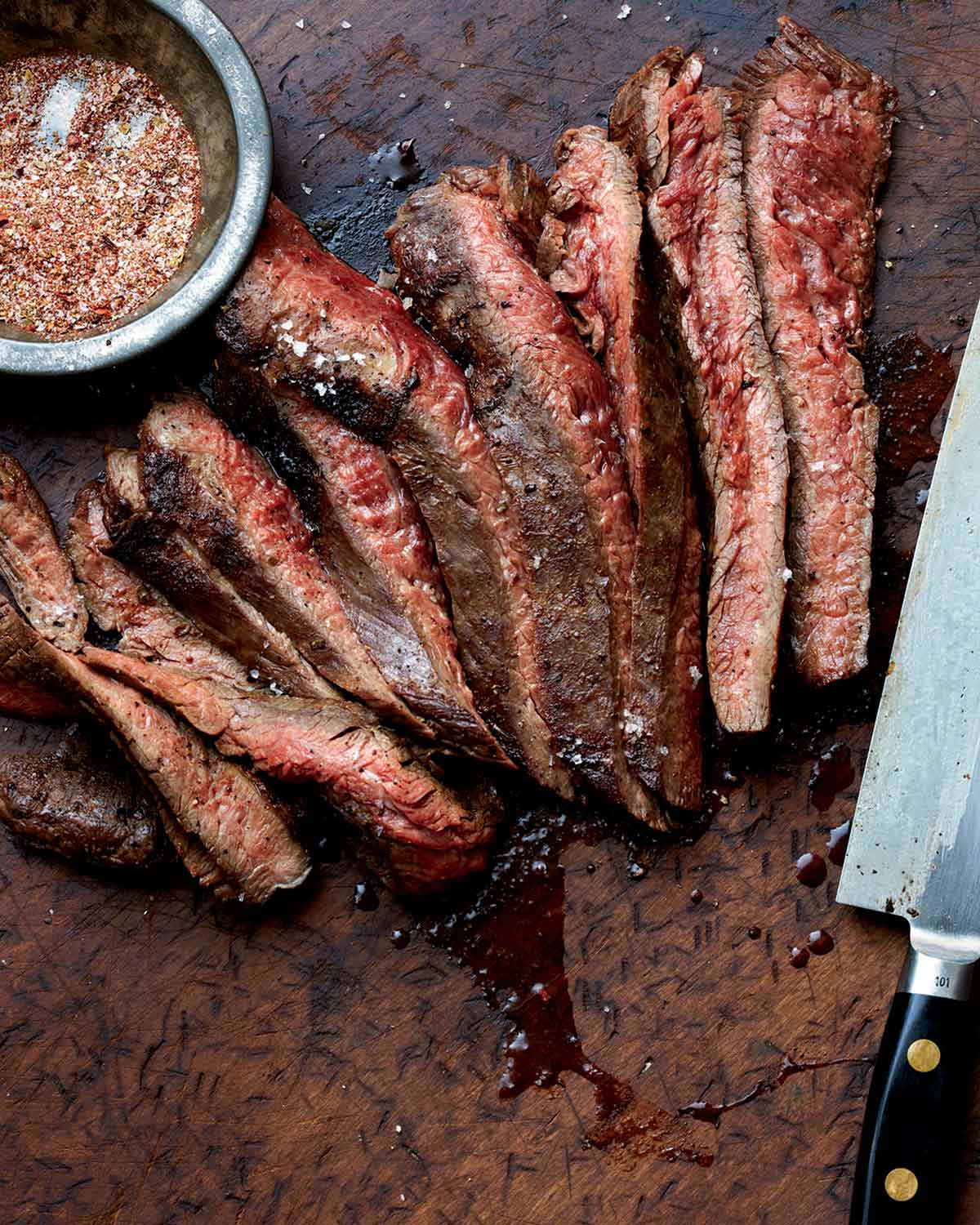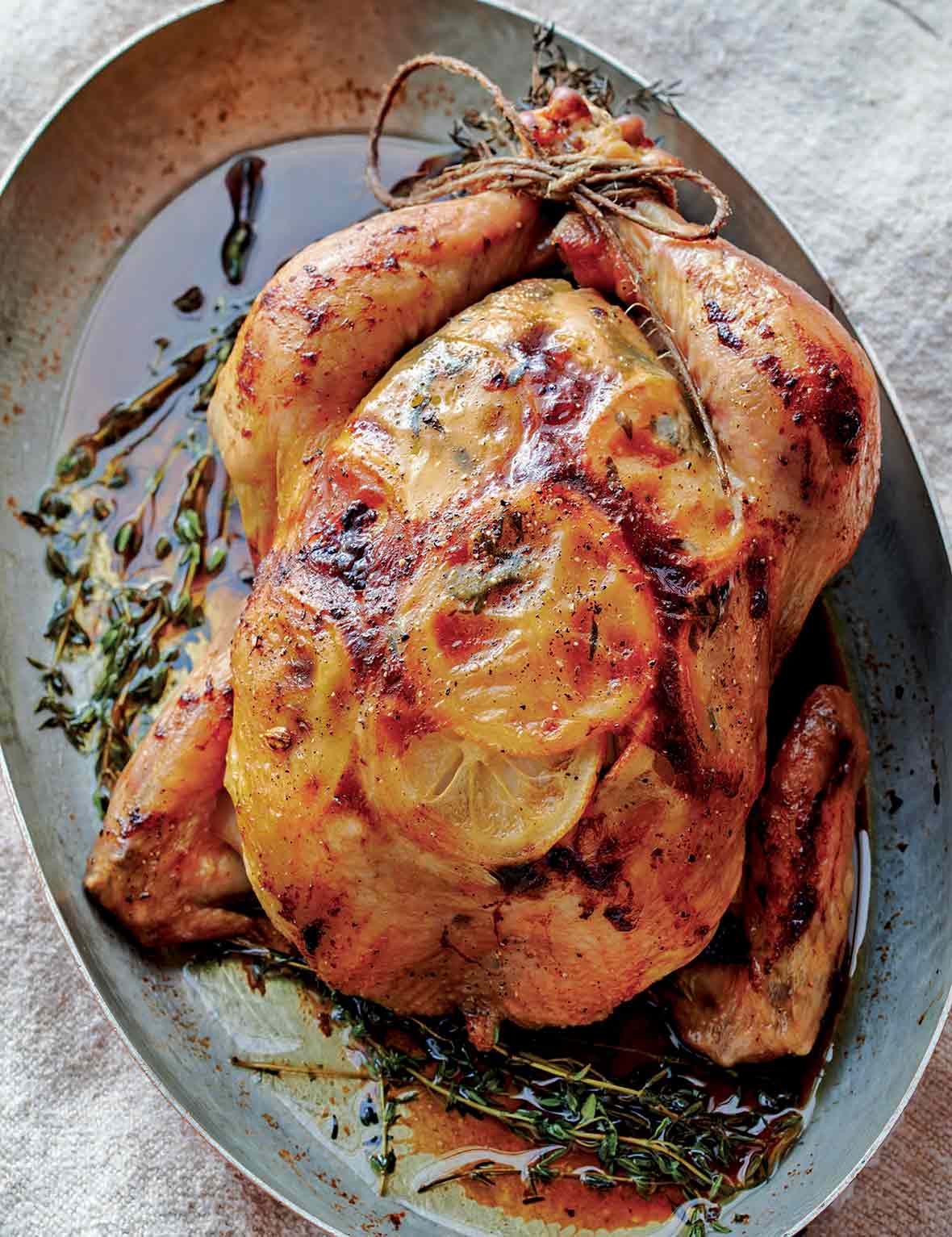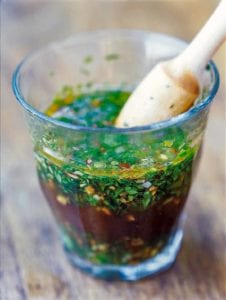
The One and I are keen on dousing, drizzling, and otherwise acquainting this emerald elixir with grilled steak, chicken, chops, seafood, or heck, just about anything.
While some traditional chimichurris call for a 1:1 ratio of vinegar to oil, this one tilts toward being more acidic. The line you choose to walk with regard to how much vinegar to add depends in part on your tolerance for tang and in part on whether you intend to use it as a marinade or drizzling sauce (opt for more vinegar for the former, less for the latter).
So try it as-is. Then, if need be, tweak it ever so slightly and try, try again. I find it to be the perfect basis for just about any use.
I made this recipe in the worst of all possible scenarios: for a friend who spends half the year in Uruguay in South America and who’s addicted to chimichurri. In short, she loved it.
As I mentioned above, this particular version is definitely tangy with vinegar. It’s also thin. So I added more olive oil (about 1/2 cup), and it balanced out the vinegar and made it a bit more viscous. By the end of the meal, we were dipping everything into it, including potatoes, bread, even our fingers.
Hell yes—in fact, you should. Let those flavors get cozy together for at least 2 hours before serving, though overnight is even better. Just know that the olive oil might solidify in the fridge (completely normal), so let it come to room temperature and give it a good whisk before serving. It’ll keep for about a week, though the herbs will lose their bright green swagger after a few days.
You could, but don’t. Hand-chopping gives you those lovely, rustic bits of herbs and garlic that make authentic chimichurri what it is. A food processor will turn your sauce into a sad, bruised paste. Plus, there’s something Zen about chopping herbs—give over to it.
While red wine vinegar is the traditional Argentine acid, Sherry vinegar is called for here for its more complex, rounded character. It’s got a subtle nuttiness and deeper flavor that plays especially nicely with well-aged steaks. White wine vinegar will work, though it lacks the deeper notes you get from its red cousin. Champagne vinegar brings a lighter, brighter touch.

Why This Recipe Works
It’s bold and traditional—no newfangled additions or cheffy twists. The proportions of vinegar to oil is higher, lending a punch of vinegar to cut through rich meat. The generous amount of garlic (six whole cloves!) means business, while the balance of fresh parsley and oregano provides that classic green-herb bass notes. Also, no food processors or fancy techniques required.
Also, you can adjust it ever so slightly to your taste—a splash more oil here, a touch more vinegar there—without losing its gutsy, traditional character. It’s the kind of sauce that makes you wonder how you ever ate steak without it.
Dishes to Drench in Chimichurri


Write a Review
If you make this recipe, or any dish on LC, consider leaving a review, a star rating, and your best photo in the comments below. I love hearing from you.–David

Chimichurri
Ingredients
- 3/4 cup sherry vinegar
- 1/2 cup olive oil
- 3/4 cup chopped flat-leaf parsley leaves
- 3 tablespoons chopped oregano leaves
- 6 large cloves garlic, chopped
- 1/2 teaspoon red pepper flakes
- 3/4 teaspoon salt
Instructions
- In a large nonreactive bowl or a glass jar, combine the 3/4 cup sherry vinegar, 1/2 cup olive oil, 3/4 cup chopped flat-leaf parsley leaves, 3 tablespoons chopped oregano leaves, 6 large cloves garlic, 1/2 teaspoon red pepper flakes, and 3/4 teaspoon salt. Taste and, if desired, gently adjust the amount of vinegar, oil, and salt accordingly.
- Serve the chimichurri immediately or refrigerate in a covered container. If chilled, allow the sauce to return to room temperature before serving. It can be kept in the fridge for a week, but we doubt it will last that long.
Notes
- Balance—This is quite a vinegary chimichurri. If you prefer a more balanced sauce, add more olive oil; up to 1/2 cup will do.
- Uses—You can use this as a marinade or drizzling sauce. For a marinate, opt for more vinegar. For a drizzling sauce, opt for more olive oil.

Nutrition
Nutrition information is automatically calculated, so should only be used as an approximation.
Recipe Testers’ Reviews
I think chimichurri is one of those sauces that has many variations, and people prefer slight differences — more garlic, less pepper, thicker sauce, looser marinade. This is a looser sauce, with an emphasis on the vinegar, which I feel works well when marinating steak. It also makes a lot, again due to its use as a marinade here. It comes together really quickly (I suspect you could even throw everything into a food processor for a couple of whirls) and gave the steak a bright, fresh flavor. I’d recommend reserving more than just 1/3 cup, though, for drizzling. We dipped bread into it, drizzled it over grilled corn, even spooned it on eggs the next morning.
I really liked this recipe as written. I kept the ratio of oil to vinegar as-is, as I didn’t find it too vinegary BUT I make my vinaigrettes more to a half and half ratio, which many might consider too tart. I really appreciated this vinegary, parsleyed, garlicky marinade and sauce with the charred smokiness of the steak, and wouldn’t change a thing. Very easy and simple and works perfectly with beef.
Sherry vinegar is one of my favorite vinegars ever, and I’m happy to use it whenever I can. Its flavor really came through for me — in a good way. Sometimes chimichurri (and other marinades and sauces) can be assertively vinegary, but this combination was a great ratio. The recipe calls for 2/3 cup, but I used 3/4 cup, and I also increased the 1/4 cup olive oil to 1/2 cup. Perhaps next time I’ll try cider vinegar out of curiosity.
Recipes that require fresh herbs appeal to me as I grow many of our own. Fresh oregano has sort of a mustiness to it, but when teamed up with the remaining ingredients it was subtle yet added that flavour so traditional in chimichurri. The red pepper flakes and garlic make this really sing!
The chimichurri tasted good even before adding flank steak to the equation, which is telling. Chimichurri + flank steak = delicious.










WAY too much vinegar. Worst chimichurri I’ve ever tasted.
Hello, Phil. Yes, it is a tart chimichurri, as we mention in the recipe:
“While some traditional chimichurris call for a 1:1 ratio of vinegar to oil, this one tilts toward being more acidic. The line you choose to walk with regard to how much vinegar to add depends in part on your tolerance for tang and in part on whether you intend to use it as a marinade or drizzling sauce (opt for more vinegar for the former, less for the latter). So try it as-is. Then, if need be, tweak it ever so slightly and try, try again.”
But I will make it clearer in the recipe itself. Thanks for your input.
Did you mean to say 3-4 TBS of Sherry Vinegar instead of ¾ cup? I think this is more of a salad dressing than a “chimichurri topping”. I went back and did it all over again and used only 1 TBS of Sherry Vinegar and this was exactly what I was looking for in traditional chimichurri. Thank you for the “dressing” recipe and then the topping once I figured out what I was looking for.
Anna, we are so pleased you found the right ratio to make this perfect for your taste and preference. This recipe does have a bit more tang from the additional vinegar, but it is easily adjustable to suit your own taste.